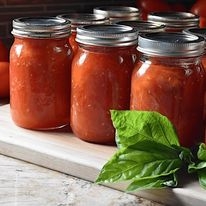
What is Flat Sour? Flat sour is a condition in canned foods characterized by a loss of flavor and the development of an unpleasant taste and odor. This phenomenon is particularly associated with canned vegetables, fruits, and acidic products like tomato-based sauces. The name "flat sour" aptly describes the dull, lifeless taste that results from this spoilage.
Causes of Flat Sour:
Microbial Activity: Flat sour is primarily caused by the activity of heat-resistant bacteria, particularly strains of thermophilic bacteria such as Bacillus coagulans and Geobacillus stearothermophilus. These bacteria survive the canning process and, under favorable conditions, proliferate, leading to the degradation of the canned product.
Inadequate Processing: Flat sour can occur when the canning process is not executed correctly. Incomplete heating or cooling processes may allow heat-resistant bacteria to survive, contributing to the development of flat sour flavors.
Low Acidity Levels: Certain canned goods, like vegetables and fruits with low acidity, are more susceptible to flat sour spoilage. The lack of acidity provides a conducive environment for the growth of heat-resistant bacteria.
Preventing Flat Sour:
Proper Canning Techniques: To prevent flat sour, it is crucial to follow proper canning techniques. This includes ensuring that the canned product is heated adequately during processing, reaching temperatures that effectively eliminate harmful bacteria.
Acidification: For low-acid foods, adding acidifying agents such as lemon juice or vinegar can help create an environment hostile to heat-resistant bacteria.
Using High-Quality Ingredients: Start with fresh, high-quality produce to minimize the risk of flat sour development. Inspect fruits and vegetables for signs of spoilage before canning.
Maintain Cleanliness: Maintain a clean and sanitized environment throughout the canning process. Sterilize jars, lids, and utensils to reduce the likelihood of introducing harmful microorganisms.
Follow Recommended Processing Times: Adhere strictly to recommended processing times for each type of food. Over-processing can lead to degradation of quality, while under-processing may allow bacteria to survive.
Flat sour is a potential pitfall in the art of canning, but with careful attention to detail and adherence to proper techniques, it can be effectively prevented. Canners should prioritize cleanliness, choose high-quality ingredients, and follow established guidelines to ensure the safety and flavor of their canned products. By understanding the causes of flat sour and implementing preventive measures, individuals can enjoy the benefits of home-canned goods with confidence in their quality and taste.